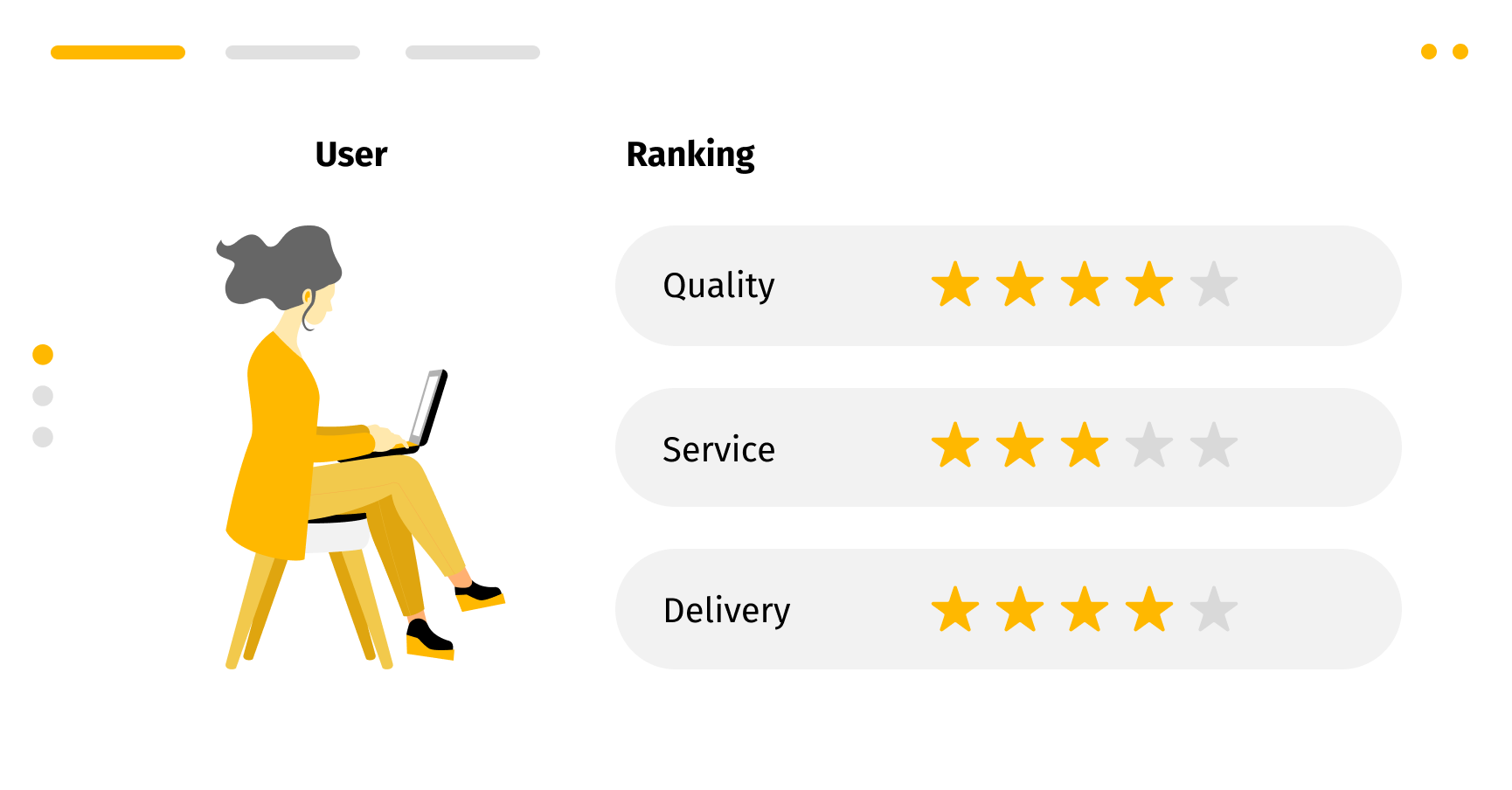
Differentiate your brand story through personalized digital experiences
While holiday sales are expected to hold steady, customers are still very selective in their spending choices. Therefore, this year’s shopping preferences are likely to be more geared toward personalized, convenient solutions in order to pique customer interest. For retailers, this means that in order to maintain a competitive advantage over alternative options, their focus needs to shift from merely selling desirable products to building a great experience around the sale to boot.
Convenient, personalized and engaging experiences are a priority for holiday shoppers in 2022. In fact, 71% of consumers expect personalization from the brands and businesses they choose. Leveraging new technology is key to meeting that demand.In this article, we will give you a glimpse of how composable commerce, artificial intelligence, augmented and virtual reality, customer 360 data, and the Metaverse can help you gear up for the holiday rush.
Composable commerce as the foundation for customer experience
Growing a successful retail business means being able to predict consumer behavior trends and anticipate their needs and wishes. With the foundation of increased investment into comprehensive analytics programs, many retailers have the tools they need to pinpoint how to create a relevant and personalized shopping experience. This translates into seamless navigation both in store and online, exclusive discounts on products from their wishlist, prompt back-in-store alerts on items they want, personalized product recommendations, and tailored messaging.
Providing personalized customer experience throughout their entire journey not only helps to boost customer conversion and retention, but average order value too. According to Deloitte, client-centric companies are 60% more profitable compared to enterprises that don’t put their customers first.Responding quickly to buyers’ demands definitely pays off, but it requires a feature-rich e-commerce platform with advanced customer experience capabilities to pull it off. Composable commerce is the perfect solution to this dilemma. Thanks to its modular nature, retailers can adjust and rework their digital platform to meet the evolving needs of their audience.
The composable commerce approach opens a vast range of opportunities to select, integrate and experiment with best-in-class solutions that provide advanced capabilities for each step of the buying journey. In addition to core commerce features like an administration dashboard, shopping cart, and checkout, the online retail platform can encompass numerous modules related to search, pricing optimization, content management, customer loyalty, and omnichannel personalization – all those things that make customer experience truly impeccable.
With composable commerce as the foundation, customer experience can be taken to new heights. Read on to find out how.
9 ways retailers can augment the holiday shopping experience
What better time than the holiday season to increase your focus on your customers? Here we outline a handful of practical ways retailers can optimize their efficiency by leveraging technology, managing inventory, and being proactive in shopper care to create consistent experiences both online and offline.
Build a virtual fitting room with a personal tailor to boot

Consumers often name the inability to see how clothing or apparel really looks on them as one of the biggest issues with online shopping. This presents a significant barrier to a personalized shopping experience. When browsing for items on e-commerce sites, they can select a color, size, and design but can't actually tell if it fits or suits their body type until it arrives and they try it on.
Today, augmented reality (AR) helps build out the missing pieces of the online experience. This technology tackles shoppers' concerns by enabling them to have a dry run of the products with virtual fitting and styling solutions.
Clothing brands have the greatest opportunity to augment customer experience through 3D renders. Using a combination of artificial intelligence, computer vision, and AR they can build a digital version of an in-store dressing room providing clients with a complete view of a brand’s products. By simply running the application on their smartphone, buyers can see how the garment looks on them as if they were taking a mirror selfie.
While virtual try-on solutions can provide accurate recommendations in regard to style, design, and color, things can get a little tricky when it comes to measurements and body shapes. You can tackle the sizing challenge by plugging a personal tailor app into your online store. This software enables users to calculate their precise body measurements from an image taken on their smartphone camera. By leveraging this technology you not only allow your customers to find their perfect fit and size, but also prevent bracketing.
Having the opportunity to “try-before-you-buy” online lowers the chance that the item will be of wrong size, the wrong color, or just “not right”. It gives customers a more accurate understanding of what they are purchasing, saving them time and money.
Enable customers to visualize products in their home
The use of visualization tools is not limited to apparel only. Their potential can effectively be realized in such areas as architecture and interior design. By placing virtual, computer-generated images of furniture or home decor in real-life environments, such applications can show exactly what they would look like in a client's bedroom or hanging on their lounge wall.
Customers can play around with the 3D models of actual products, and rotate or move them in any room to get an idea of their size, as well as color and style compatibility relative to what's already in the room. This not only brings the product to life but also gives shoppers the confidence to complete a purchase, significantly lowering product returns, and offers the highest level of retail personalization, leading to increased customer satisfaction.
Empower customers to embrace their creativity with customizable products
When it comes to holiday shopping, customers frequently search for gift options that can be customized in order to provide a more personal touch. In fact, 36% of consumers are keen on purchasing personalized products or services, even if it implies a higher price tag and longer delivery times.Personalized shopping provides customers with a vast array of options to tailor desirable goods to their unique specifications related to either design or functionality. If you have an established manufacturing process paired with the technology needed to customize products, your company can quickly become a number one destination for consumers looking for personalized holiday gifts.
Personalization in retail can take the form of something as simple as the inscription on a coffee mug, print-on-demand phone case, monogrammed scarf, or conceptually themed shoes. Conceptual personalization requires a multi-modal AI framework that enables customers to customize the color, design and style of products based on themes and even conceptual terms like “jack-o’-lantern” or “Christmas Eve”. The CLIP (Contrastive Language-Image Pre-Training) model by Open AI is a neural network trained on a variety of (image, text) pairs that processes text queries to customize products with the most relevant colors, materials and designs. For instance, with Nike by you, shoe customization app users can enter their unique specifications on the product page and build one-of-a-kind sneakers with personalized colors, style and design.Propel your brand in the Metaverse
The Internet's early wave revolutionized the shopping landscape by taking commerce beyond its traditional brick-and-mortar setting and extending it to new digital horizons. It introduced a variety of ways for customers to shop and connect with their favorite brands, including websites, social media, email marketing, online review platforms, and chatbots. The combination of these touchpoints lays the foundation for omnichannel commerce which has been dominating the market for over two decades.
Yet today, maturing technologies like AR, VR, cloud computing, artificial intelligence (AI), machine learning (ML), and networks (5G, 6G, fiber optics) form a heady brew for the next digital disruption in retail. Together, these technologies create the experience of a 3D environment in which users interact with their surroundings, called the Metaverse.
By entering this retail market in the early stages, fashion brands can reap the benefits offered by e-commerce and physical retail. By merging online and offline shopping experiences they will get the best of two worlds – the immersive nature of brick-and-mortar stores and the ease of buying goods over the internet.
Retailers will also be able to collect a customer’s purchasing and browsing histories, harnessing that data to offer a hyper-personalized digital experience. Thanks to advanced product visualization capabilities in the metaverse, shoppers will be able to test clothes in a computer-generated setting by styling their online avatars with branded apparel. For retailers, launching their virtual store would translate into new outlets to drive brand awareness and increase traffic.
Deliver personalized search results and product recommendations

Whether it be gifts for family, friends, or coworkers, the holiday season often brings with it long gift lists. Therefore, it’s more critical than ever to implement a slick search solution in order to assist shoppers with finding exactly what they are looking for. It is your essential tool for driving conversions and growing shopping cart order values.
Modern intelligent search solutions leverage the power of AI, ML and natural language processing (NLP), going beyond simple keyword matching and info embedded in titles, images, descriptions, or metadata. Semantic search considers the context and meanings of user queries, coupled with customer behavior data, to provide the most relevant product matches.
However, creating a tailored, intuitive, and intelligent product discovery experience won’t be complete without personalized recommendations. While shoppers expect instant, precise, and relevant search results they might not be able to find the right words to describe the desired item.
Recommendations can aid in tackling the issue of underspecified and ambiguous queries as they take into account customer browsing history, location, and shopping behavior paired with historical data and algorithmic decisions closely matching the client’s buying intent.
The idea is not only to showcase marketable products but also to make them seem tailor-made for every potential buyer. This means you can use personalized recommendations as an upsell tool at the checkout stage or as an additional engagement mechanism embedded in product pages. To make this experience truly personalized you can introduce a gift builder feature to your online shop. This capability allows your customers to create easy-to-shop bundles with different combinations of products from your hand-picked recommendations.Strengthen conversions with smart, relevant reviews

The effects of reviews are quite measurable. They enable retailers to sell more, gain new customers, facilitate client contentment, and better understand the needs of their target audience. For example, we implemented Yotpo, a multi dimensional ratings and reviews solution, for a composable commerce platform that helps our client offset rising acquisition costs by boosting customer loyalty.
Customer feedback can also decrease the business’ reliance on contact centers. In many cases, clients can find the answers to commonly asked questions, like delivery times, packaging options, and overall product functionality, through comments left by others.
Educate consumers through compelling content

Online shopping provides customers with ample opportunities to explore and compare similar products. Therefore, a clear representation of your merchandise with adequate descriptions, specifications and high-definition images is crucial to entice visitors and convert them from browsers to buyers.
Since most shoppers start by visiting a search engine and then go to the retailer’s website optimizing the SEO strategy by focusing on providing precise information, addressing common questions, and clarifying pricing to consolidate product data to increase your chances of getting traffic through organic searches. This way producing quality content became a great practice to boost your company’s marketing efforts. And if you offer materials that will appeal to your visitors they are likely to come back to your website.
While content can be used as a customer acquisition tool, its primary purpose is to educate customers, offer expert advice on the topic, and prevent negative feedback. To achieve that you can mix and match different content types, including blog posts, eye-catching images and infographics, styling tutorials, or video guides.
If you want to reach out to a younger audience it is also important to direct your content efforts to visual engagement techniques, such as live streaming, co-browsing, and screen annotations. Millennials and Gen-Z’s shopping experience is primarily driven by rich product details and by harnessing the power of multimedia you can tackle consumer concerns regarding the quality of your product, show them how it looks in the real-life setting, and build an emotional connection.
To manage all content and then distribute it across any digital touchpoints, from your website and mobile app to email newsletters and electronic shelf labels, you will need a headless content management system. A headless CMS features a content repository, the “body”, which is separated from the user-facing layer, the “head”. This allows you to manage content in one place, and then distribute it across any digital touchpoints, platforms and applications. All the interaction within the CMS is done via APIs which makes it significantly easier to integrate, manipulate, and distribute the content, reducing the time it takes to deliver omnichannel experiences.
We’ve recently built a composable commerce platform for selfologi, leveraging Amplience as the CMS component. This API-first solution enables retailers to deliver fast, performant, and consistent digital experiences to any channel or device. With UI extensions, Amplience helps to customize and extend the content editing interface to meet the ever-changing business needs. As a cloud-native solution it offers immense freedom in terms of flexibility and scalability, allowing retailers to swap out or add any new services on the go. Their server infrastructure is purposefully built to serve high volume peak periods, which makes it a perfect choice for the holiday season.Provide real-time inventory views
The period from Black Friday to Christmas Eve marks some of the biggest dates in retail. In fact, during the holiday rush, businesses sell 25% of annual total orders, which makes it the busiest time of the year for e-commerce brands.
To sustain this peak, retailers need to proactively prepare for the upcoming holidays in order to reward themselves later on. Having a transparent inventory management system ensures retailers send consistent and honest communication about product listings, maximize returns while minimizing disruption to customer service, and prepare stock based on consumer demands.
Offer discounts and deals
Attractive prices and deals are high up on the list of things that matter to buyers during the holiday rush. A strategic use of special offers and discounts on your e-commerce site can make the difference in whether a shopper turns into a customer. Offering a personalized deal at the point they are about to make a buying decision helps to maximize conversion and produces a greater business impact.
Retail has a complicated pricing process, making it hard to match the customer with the price, identify the best scenarios for end-of-season sale, and set the most profitable discount range. The key to tackling these issues is an omnichannel pricing engine. Using AI to analyze customer data and AutoML to tune the parameters, this solution can configure pricing, offers, and promotions based on demand patterns, geographical location, inventory constraints, and competitor data.
Pricing strategy can be further optimized by deploying dedicated tools for evaluating price and promotion plans for individual products, product groups, and categories. These forecasting and evaluation models can not only optimize prices for replenishable and seasonal products but also to detect new promotion opportunities that will enable you to connect to customers through all channels, and increase their lifetime value.
Summary
Consumer habits evolved so dramatically over the pandemic that customer experience became an instant priority for retailers. A practical customer-centric strategy is a must for companies that want to thrive in the fast-paced e-commerce market and grow their business in the post-covid world. For this reason, it’s vital to leverage every source at your disposal to create a superb customer experience, from composable commerce and technology to thoughtful content tactics and seamless product discovery.
In this article we have covered just a few personalized customer experience examples that can support your end-of-year success. Keep in mind that the holiday rush is not the only time of the year your customers will appreciate the convenience and value these experiences offer. Contact us to discover new ways to deliver differentiated offerings that will resonate with your audience and help personalize their shopping experience.
